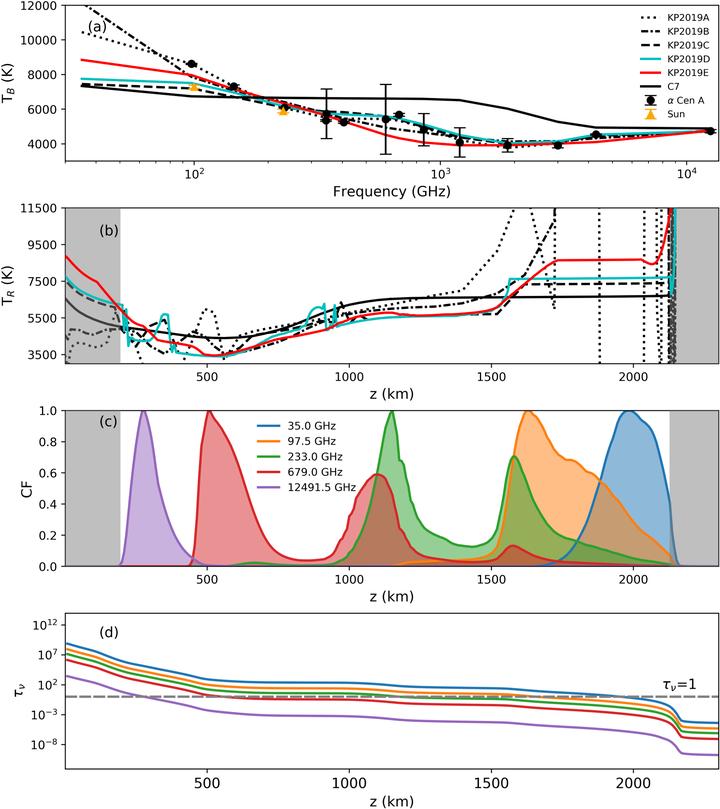Nonlinear Convergence of Solar-like Stars Chromospheres Using Millimeter, Submillimeter, and Infrared Observations
 Tapia-Vázquez & De la Luz, 2020
Tapia-Vázquez & De la Luz, 2020Resumen
The dominant emission mechanisms at millimeter/submillimeter remain largely unknown for most spectral types other than Solar analogues. This is due in part to the lack of data to inform stellar atmosphere models. In this work, we present a new methodology to fit the observed and synthetic spectrum of main-sequence stars through semiempirical models. We use the Levenberg-Marquardt algorithm as a Nonlinear method, PakalMPI as the semiempirical model and the observations that are part of an ongoing observational campaign entitled Measuring the Emission of Stellar Atmospheres at Submillimeter/ Millimeter wavelengths. Our results show that we can use semiempirical models as an input model to reproduce and constrain the observed spectrum of main-sequence stars. In addition to a better understanding of stellar processes, these models are also essential for determining the stellar contribution to unresolved circumstellar disks at submillimeter/millimeter wavelengths.